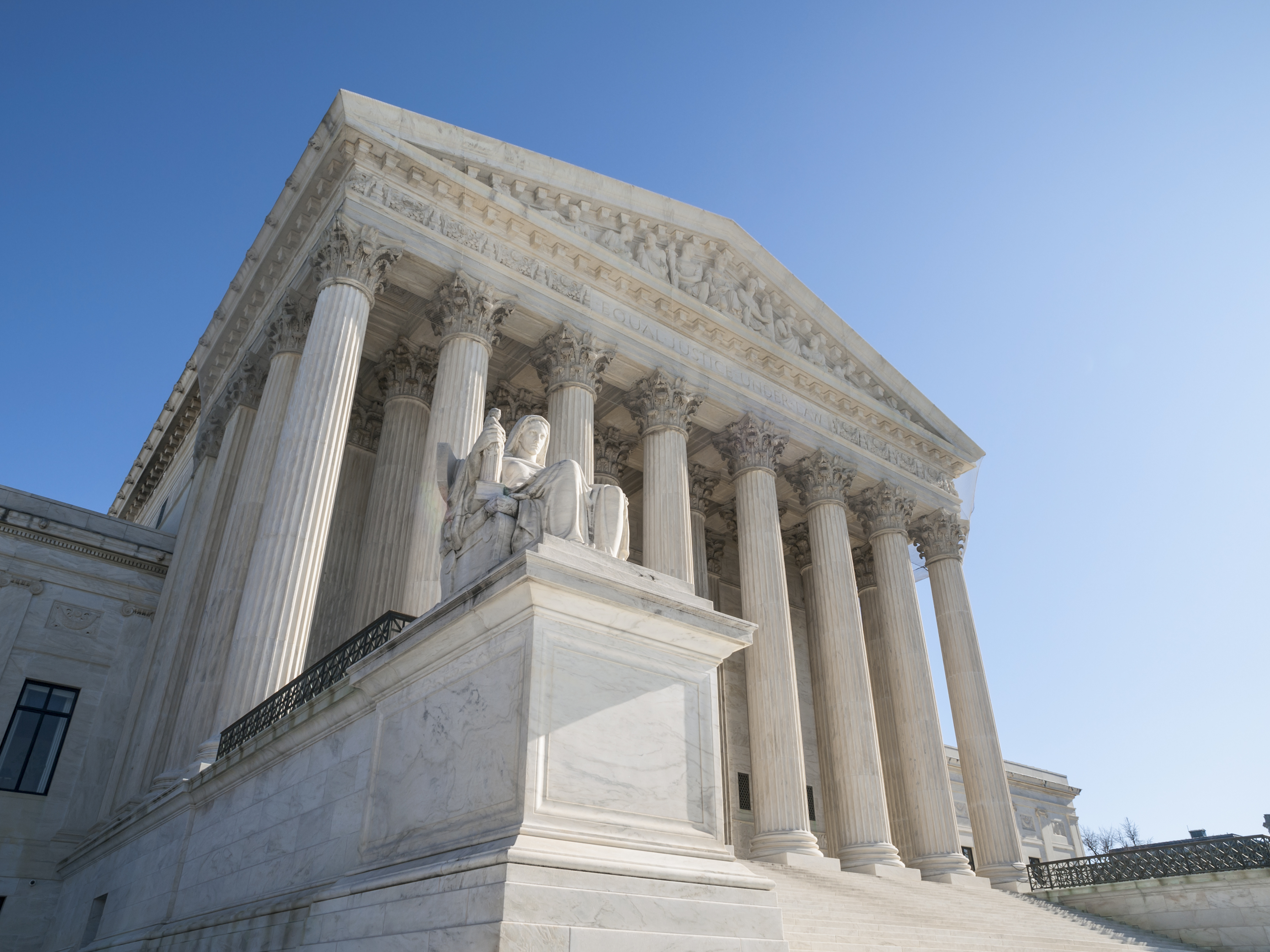
But expect more of a gradual climb than a jack-rabbit acceleration, without the kind of alarms that are set off by disposing of the few landmark precedents that are familiar to the general public.
Despite the loud clamor of the left and the right about Roe v. Wade, for instance, the ruling need not be overturned for the Supreme Court to uphold a state law that would virtually eliminate the abortion clinics within its borders.
The justices do not need to junk their landmark decision finding a constitutional right for same-sex couples to marry to exempt individuals and businesses that, because of religious objections, do not want to serve such couples. And using race as one factor in determining higher education admissions, upheld by the court in a 2003 decision, is already facing a soft expiration date: Justice Sandra Day O'Connor at the time said that it probably wouldn't be needed in 25 years.
Only two justices remain from that five-member majority, and conservatives will probably soon have a case that could speed up the process.
That incremental approach has been the hallmark of the man who probably now becomes the median justice between four justices on the left and four more-conservative colleagues on the right: Chief Justice John G. Roberts Jr.
If his long-term goal is a move to the right, Roberts has relative youth on his side: The oldest conservative justice is Clarence Thomas, and 70 is not very old in Supreme Court years.
And Roberts is reflexively defensive about those who claim the court is composed of nothing more than politicians in robes, whose decisions are shaped by election returns rather than law.
In that regard, his task is made more difficult by the fact that the liberals were all nominated by Democratic presidents, the conservatives uniformly by Republicans. He has complained in the past that the partisan nature of the confirmation process has hurt the court in the public eye.
Experts say he is right to be concerned.
"The Supreme Court is at a perilous moment in its history, and I think it knows it," said Charles Gardner Geyh, a law professor at Indiana University.
Speculation about how Kennedy's replacement could allow the Trump administration to fulfill its policy goals only increases the perception of the court being at the mercy of politicians.
"If I'm Chief Justice Roberts, I'm more than a little bit concerned that you can replace a Reagan appointee with a Trump appointee, and 48 hours later everyone expects that you have a fundamentally different court," Geyh said.
The court in the recently completed term deviated from its deference to previously decided precedents - "stare decisis," it is called, Latin for "stand by things decided" - and overturned two lesser-known decisions.
"Still, there are many factors that the court considers in deciding whether to overrule a case, and the court is generally reluctant to overturn its precedents," said Gregory G. Garre, a Washington lawyer and former solicitor general under President George W. Bush.
"Even if the court marks a path in a more conservative direction, it is likely to be sensitive to the perception that it is not respecting prior precedent or the ordinary tenets of stare decisis," he said. "And this is something to which the left of the court is likely to be especially attuned."
Some compare the confirmation of a Trump nominee to replace Kennedy to the last time one of the court's pivotal members retired, and O'Connor's seat passed to Samuel A. Alito Jr., a reliable conservative, in 2006.
In the next term, the court restricted the speech rights of public school students, limited a school board's ability to consider race in making school assignments for desegregation purposes, and upheld a federal antiabortion law similar to a state one that O'Connor had helped block.
The liberal People for the American Way on Monday catalogued precedents it said had been overturned or "hollowed out" by the Roberts court. The organization concluded, "Just as the court took a dramatic rightward turn when Alito replaced O'Connor, it is poised to lurch even farther rightward if the Senate allows Trump to replace Kennedy with anyone from his list of potential justices."
Some issues - restrictions on the death penalty, or instance, or finding that courts have a role in combating partisan gerrymandering - will face a far less hospitable court with a justice more conservative than Kennedy.
And Roberts already has shown his incremental approach in a number of cases. He did not have to advocate overturning O'Connor's approach to affirmative action in university admissions, for instance, to join the minority in saying a plan at the University of Texas should be struck down. The university hadn't proved the plan was necessary, the dissenters said.
Likewise, he did not try to upset the court's precedent of striking down laws that present an "undue burden" on a woman's right to an abortion when he supported a state law that put additional - advocates said impossible - requirements on abortion clinics. Again in the minority, he agreed with fellow dissenters that abortion providers had not sufficiently proved the law had harmed them.
Leah Litman, a law professor at the University of California at Irvine, said such an approach does not rely on overturning precedents.
"The law would have closed all of the clinics in the state (Texas, a pretty big one) save for a handful in major metropolitan areas," Litman wrote in an email. "Or the law in Mississippi that would have closed the state's only clinic, or the Arkansas law that would have closed 2/3 clinics and ruled out medication abortion. Upholding those laws would gut Roe and leave it without any force, particularly for women who lack the money and resources to travel long distances to obtain highly regulated health care procedures."
Roberts presumably would be in the majority on these issues with a new court.
Roberts joined the majority in taking a chunk out of the McCain-Feingold campaign finance act. Instead of junking the Voting Rights Act, a civil rights-era accomplishment that Congress had recently reaffirmed, he put together a five-member majority that removed a key part of the law, rendering it far less intrusive in states that had been found to discriminate in the past.
Richard M. Re, a UCLA law professor and former Kennedy clerk, dubbed the approach of the Roberts court in those cases "the doctrine of one last chance."
That refers to the fact that Roberts had given Congress a chance to act to avoid a reckoning.
Re said that could be seen as a form of judicial restraint. But it also gives the court more authority when it makes a later, more dramatic ruling.
"Even as it recounts the somber need to avoid important questions, the court seems to know, or hope, that its first chance to decide will not be the last," he wrote.


 Contact The Editor
Contact The Editor
 Articles By This Author
Articles By This Author